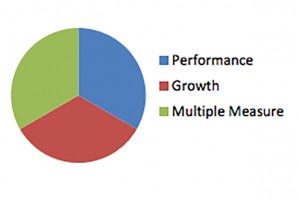Calculation Concerns Dominate Public A-F Talks
Indiana’s State Board of Education approved initial rule language for a new A-F school accountability system during their January meeting. This week, they traveled the state to gauge public reaction to the proposal.
Beginning Wednesday, held hearings in Evansville, Marion and Indianapolis. Board Director of Accountability Cynthia Roach says the panel generally heard the same concerns at each meeting.
“We’ve been hearing a lot about the [ratio] of performance and growth,” Roach says. “We’ve also been hearing a lot about being equitable for your lowest-performing students, that they receive equitable points when they’re showing high growth.”
We’ve already told you a bit about how the system would change if this proposal gets approved – but let’s pick out the items Roach is talking about:
Calculation Ratios:
- The equation used to calculate a school’s grade uses the following variables: performance, growth, and multiple measures (i.e. graduation rate, college- and career-readiness).
- Each variable is assigned a letter grade (A, B, C, D or F) on a scale similar to what you would see on any test a student takes in school: 90-100 points is an A, 80-89 point is a B, and so on.
- To determine a school’s total score, the scores for each of the three variables gets weighted (based on data about enrollment) and then added together.
Growth scores:
- As suggested by the name, growth is determined using data from both the current year and the previous year.
- A school’s total growth number is the sum of students’ English/Language Arts scores and math scores.
- The score for each subject is the sum of the average marks of two subgroups: the highest performing students and lowest performing students. In other words, one-half is the average ISTEP+ mark of all the kids performing in the top 75 percent of the school, and the other half is the average ISTEP+ mark of all the kids performing in the bottom 25 percent of the school.
For a more detailed explanation of how each domain is calculated, see pages 3-7 of the proposed rule language. If you’re a visual learner, check out this calculation chart from the IDOE website.
At the board’s meeting Friday in Indianapolis, John Ulbright, a math instructional coach with MSD Wayne Township, told the board that growth opportunities need to be equal for all students, regardless of how they performed in the past. He sees this as a potential problem for his district where, like other urban schools, high student turnover is typical.
“If you get a large batch of students who have been moving from school to school – and probably likely to have not succeeded at some of those schools in the past – if you had a ‘did not pass’ score, then I can’t get the same amount of growth points as maybe another school that’s inheriting a large number of ‘pass plus’ students,” Ulbright explains. “When you teach particularly in an urban setting, you have to know that whatever growth you get out of your students is going to be recognized and valued, and the way that we view this particular model is that the growth of some students is valued significantly less than the growth of other students.”
Judy Stegemann, chief academic officer in Wayne Township, agrees, adding that an A-F model should fuel a system for improvement.
“I think this model inherently has things built in it that does not drive or encourage growth and improvement both equally,” Stegemann says. “It overrates performance and underrates growth. Because of that, the opportunity that drives people – the opportunity to achieve and grow – is not being acknowledged.”
Megan Erbacher of the Journal Courier & Press reports that attendees in Evansville shared similar concerns:
EVSC Chief Accountability Officer Katie Minihan said that before a model is adopted, she wants to know the correlation between growth and performance. Another one of Minihan’s concerns is that the new model still fails to adequately reflect performance of alternative schools.
“It seems wise to do trial runs with the data to investigate the impact,” she said. “Because it’s possible the new ISTEP data could show an even higher correlation between growth and performance. … If Indiana is truly interested in a model where growth and performance show low correlation and are independent in their relationship, then a model where the same number of points is awarded in each growth category regardless of previous performance is the better option.”
Turnout was fairly small at each of the three public meetings – at least relative to regular attendance at monthly state board meetings. But anyone may still submit comments about the topic on the State Board’s website. Board staff say they’ve received about nine or ten online comments since they opened the online form February 3. That will remain open until March 13.
“The online comments will be given much weight because we know it gives people a chance to think through exactly what it is that they want to say,” Roach says.
Roach and Debbie Dailey, director of accountability for the Department of Education, will compile all the comments and form any recommendations they may find from that material. Roach says they hope to present those suggestions to the board during their April meeting.


